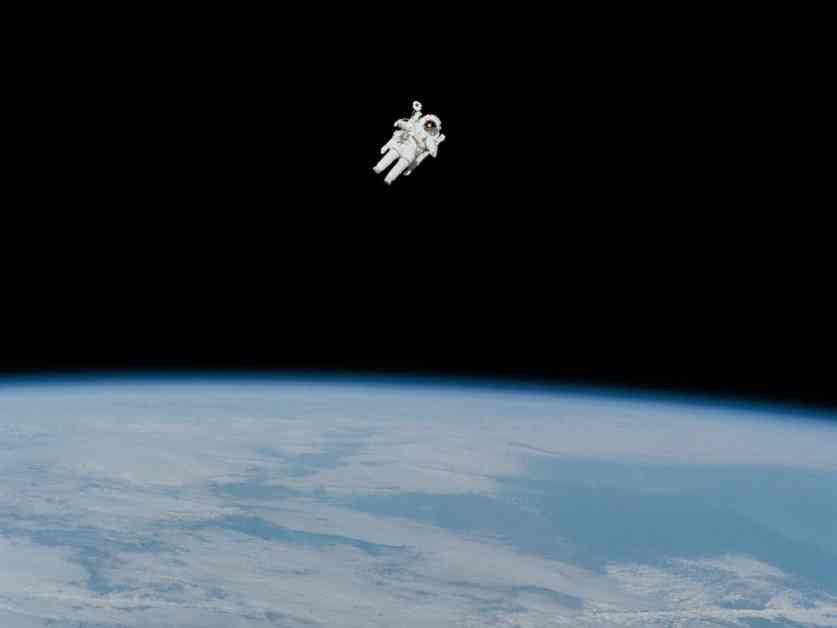On February 7, 1984, astronaut Bruce McCandless took a historic step into space by venturing out from the Challenger shuttle using a nitrogen-propelled, hand-controlled backpack. This marked the first untethered spacewalk in history, capturing the attention of the nation and the press.
The Challenger shuttle mission of 1984 faced some initial setbacks and failures before McCandless and Colonel Robert L. Stewart embarked on their spacewalk. Despite challenges with satellite launches, orbital rendezvous experiments, and toilet malfunctions, NASA was eager for positive publicity.
When McCandless activated his jetpack and floated away from the shuttle, he experienced a mix of nervousness and excitement. He carefully maneuvered in space, using the jetpack’s thrusters to control his movements. As he gazed back at the shuttle from a distance of 320 feet, he marveled at the sight of Earth rotating beneath him, recognizing familiar landmarks like Cape Canaveral.
Meanwhile, inside the Challenger shuttle, pilot Robert L. “Hoot” Gibson captured striking images of McCandless suspended in space. McCandless tested the capabilities of the jetpack by performing maneuvers like somersaults and flying back and forth from the shuttle. Despite the technical aspects of the experiment, McCandless hoped to experience a moment of peaceful solitude in the vastness of space.
As the spacewalk reached its conclusion, McCandless and Stewart returned safely to the shuttle, ending a successful mission that captured the imagination of the public. The astronauts’ families and Mission Control celebrated the achievement, marking a significant milestone in space exploration history.
The story of Bruce McCandless’s untethered spacewalk serves as a testament to human ingenuity, courage, and the spirit of exploration. It highlights the remarkable achievements of astronauts who push the boundaries of what is possible in the pursuit of knowledge and discovery.

